The most famous is probably the Eckhorn from Klipsch:
https://www.klipsch.com/founder
https://www.pinterest.de/pin/626352260655991272/
https://www.arkansasonline.com/photos/galleries/2019/nov/01/gallery-01-11-2019-16-41-59/
https://www.itishifi.com/hifi/klipsch-new-model-t
https://mysoundbook.eu/klipsch-klipschhorn-der-legendaere-hornlautsprecher-aus-den-40ern/
https://www.lowbeats.de/alles-nur-kein-********-der-markante-us-hersteller-klipsch-wird-75/
URL corrupted - keywords for Google (for getting this URL and information there): lowbeats der markante us hersteller klipsch wird 75
I am looking for the first released reviews from 40s and 50s.
Thank you for posting.
Any advertisements from those days in the attachment.
P.S.: this thread don't provide the wanted information:
https://www.diyaudio.com/community/threads/vintage-speakers-the-look.345351/
https://www.klipsch.com/founder
https://www.pinterest.de/pin/626352260655991272/
https://www.arkansasonline.com/photos/galleries/2019/nov/01/gallery-01-11-2019-16-41-59/
https://www.itishifi.com/hifi/klipsch-new-model-t
https://mysoundbook.eu/klipsch-klipschhorn-der-legendaere-hornlautsprecher-aus-den-40ern/
https://www.lowbeats.de/alles-nur-kein-********-der-markante-us-hersteller-klipsch-wird-75/
URL corrupted - keywords for Google (for getting this URL and information there): lowbeats der markante us hersteller klipsch wird 75
I am looking for the first released reviews from 40s and 50s.
Thank you for posting.
Any advertisements from those days in the attachment.
P.S.: this thread don't provide the wanted information:
https://www.diyaudio.com/community/threads/vintage-speakers-the-look.345351/
Attachments
-
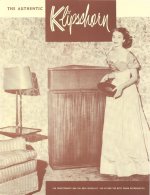 AvXf41lCAAEghH4.jpg169.8 KB · Views: 55
AvXf41lCAAEghH4.jpg169.8 KB · Views: 55 -
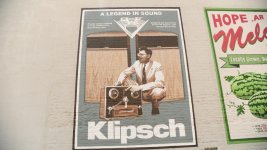 ZC1_6406_0.jpg115.9 KB · Views: 51
ZC1_6406_0.jpg115.9 KB · Views: 51 -
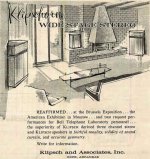 image-asset.jpeg219.9 KB · Views: 50
image-asset.jpeg219.9 KB · Views: 50 -
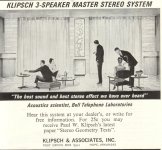 post-16225-13819262094362.jpg302 KB · Views: 55
post-16225-13819262094362.jpg302 KB · Views: 55 -
 post-16225-13819262093472.jpg39 KB · Views: 43
post-16225-13819262093472.jpg39 KB · Views: 43 -
 post-16225-13819262091492.jpg51 KB · Views: 49
post-16225-13819262091492.jpg51 KB · Views: 49 -
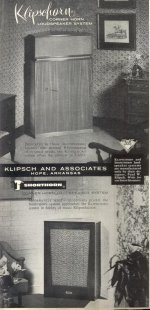 post-16225-13819262087072.jpg94.4 KB · Views: 46
post-16225-13819262087072.jpg94.4 KB · Views: 46 -
 post-16225-13819262087922.jpg52.6 KB · Views: 43
post-16225-13819262087922.jpg52.6 KB · Views: 43 -
 post-16225-13819262088522.jpg51.9 KB · Views: 50
post-16225-13819262088522.jpg51.9 KB · Views: 50 -
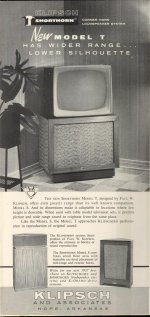 post-16225-13819262089202.jpg80.8 KB · Views: 50
post-16225-13819262089202.jpg80.8 KB · Views: 50 -
 post-16225-13819262090072.jpg49.2 KB · Views: 49
post-16225-13819262090072.jpg49.2 KB · Views: 49 -
 post-16225-13819262090802.jpg63.8 KB · Views: 57
post-16225-13819262090802.jpg63.8 KB · Views: 57
Last edited:
Audio Magazine, December 1947--see pg. 32 of this pdf archive file in the "new products" section, talking about Paul Klipsch's initial licensing of the Klipschorn design to Brocener (a deal that was later regretted, according to Mr. Klipsch, due to QC issues).
This is the original 2-way Klipschorn version before recording technology extended the upper range of recordings to 20 kHz from 12 kHz (which occurred ~1960), and well before stereo recordings were available for home audio, i.e., all phonograph record playback was mono.
The bass horn of the K-horn is basically unchanged since that time (only the woofer-slot size decreased in the early 1960s due to a discovery of an amplitude response dip in the bass horn at its 400 Hz crossover frequency) due to a driver change necessitated by unavailability of the original woofer.
Acoustic measurement instrumentation available at that time was very expensive and not very capable.
Chris
This is the original 2-way Klipschorn version before recording technology extended the upper range of recordings to 20 kHz from 12 kHz (which occurred ~1960), and well before stereo recordings were available for home audio, i.e., all phonograph record playback was mono.
The bass horn of the K-horn is basically unchanged since that time (only the woofer-slot size decreased in the early 1960s due to a discovery of an amplitude response dip in the bass horn at its 400 Hz crossover frequency) due to a driver change necessitated by unavailability of the original woofer.
Acoustic measurement instrumentation available at that time was very expensive and not very capable.
Chris
Last edited:
...in that it doesn't need corner loading any more?
You're not talking about the Klipschorn...rather you are referring to the Klipsch Heritage Jubilee, which is a different loudspeaker altogether (internally ported bass horn with ~straight-sided horn expansion, DSP EQ and time delay correction):
https://patents.google.com/patent/US11470417B1/en
https://patents.google.com/patent/US20230069408A1
https://d2um2qdswy1tb0.cloudfront.net/product-specsheets/Jubilee-Spec-Sheet-v04.pdf
The bass horn of the Heritage Jubilee uses a bit over 20 dB of EQ in order to provide flat amplitude response in half space loading. See pg. 7, fig. 20 of the following .pdf file:
https://www.diyaudio.com/community/...eritage-jubilee-performance-v0-2-pdf.1144985/
Chris
Thank you for the advice to this early announcement from Dez 1947.Audio Magazine, December 1947--see pg. 32 of this pdf archive file in the "new products" section, talking about Paul Klipsch's initial licensing of the Klipschorn design to Brocener (a deal that was later regretted, according to Mr. Klipsch, due to QC issues).
This is the original 2-way Klipschorn version before recording technology extended the upper range of recordings to 20 kHz from 12 kHz (which occurred ~1960), and well before stereo recordings were available for home audio, i.e., all phonograph record playback was mono.
The bass horn of the K-horn is basically unchanged since that time (only the woofer-slot size decreased in the early 1960s due to a discovery of an amplitude response dip in the bass horn at its 400 Hz crossover frequency) due to a driver change necessitated by unavailability of the original woofer.
Acoustic measurement instrumentation available at that time was very expensive and not very capable.
Chris
By OCR softwarte I convert the text in doc format and load up the text here for good translation in other languages.
=================================================================================
KLIPSCH SPEAKER (New Products, Dez 1947)
A new 2 -way sound reproducer is being manufactured by Brociner Electronics Laboratory of New York City. A basically new design, the unique feature of the
Klipsch Speaker System is its use of a horn for the low frequencies as well as for the high frequency range.
Conventional 2 -way speaker systems use a direct radiator for the low frequencies.
The Klipsch low-frequency horn is folded in an ingenious manner, and uses the corner of the room as an integral part of the acoustic system so that, occupying only 14 cubic feet of space, it provides performance equivalent to conventionally designed horns 8 to 16 times as bulky. Such large horns are used in theater installations, but could hardly be used in a living room, while the Klipsch Speaker System fits unobtrusively into a corner, where it utilizes the converging walls and floor as an extension of the low- frequency horn. The listener is literally inside the loudspeaker. With both the high and low-frequency speakers coupled to horns, their relative efficiencies are nearly equal. Thus, it is not necessary to attenuate the high frequency unit markedly to match the low- frequency output, as in the case of direct radiators.
The gain in efficiency permits the use of a relatively simple, high-quality triode amplifier of moderate cost, for most applications. Because of the horn loading, voice -coil excursion at low frequencies, even at full power, is extremely small. As a result, distortion is of the order of 1 /100th to 1 /400th that of direct radiators.
The non-resonant character of the speaker system affords reproduction of transients without hangover; there is no resonant frequency in the bass range to be excited by all notes in its vicinity. Bass instruments are clearly recognized. The original tones are reproduced; one does not hear sounds originated by the speaker.
A novel design of high-frequency horn provides a 90-degree horizontal distribution pattern of frequencies above 500 cycles, to match the dispersion of the low- frequency horn. Exceptionally uniform high-frequency dispersion is accomplished without the usual multicellular construction, which produces a ragged distribution pattern. Fundamentals from 30 to 15,000 cycles are cleanly reproduced and uniformly distributed throughout the room.
The dividing network is a constant resistance, parallel type, providing 12 decibels per octave attenuation, and has a cross- over frequency of 500 cycles -sufficiently low to reduce to a negligible value cross - modulation in the low- frequency speaker. An L -pad permits adjustment of balance to suit individual dbnditiorts. Air-core inductors are used, to avoid distortion and cross-modulation products ordinarily resulting from non linear magnetic components. The Klipsch Speaker System is available as a complete unit, and the individual components such as the high- and low- frequency horns, drivers, and dividing network, can be obtained separately.
The Model lA is rated at 20 watts. Other models provide power handling capability up to 60 watts in one unit.
Mr. Shurv: The AK6 is just an enclosed-back Khorn (like the 60rh Anniversary edition)--which has been a DIY mod for many decades to avoid the 400 Hz drop-out in amplitude response that occurs if a tight seal to the corner walls is not achieved with the standard open-back Khorn. That's one of the easiest mods that can be done on a Khorn--and is fully reversible using four screws and a suitably sized piece of 1/2" plywood.
All that the closed back means is that you have to be within ~1-2 feet of the room corner (1/4 wavelength at 100 Hz--where the Khorn bass bin ceases to enclose a full 1/4 wavelength internally.
The Khorn bass bin uses an exponential expansion that has a definite hard cutoff frequency based on the area expansion rate of the horn (about 40 Hz, with -3 dB point at 31 Hz in eighth space loading). The new Heritage Jubilee apparently doesn't use an exponential area expansion--more like a straight-sided expansion rate, but the downside is a fair bit of required EQ and not so gradual loss of horn loading below 100 Hz (even in a room corner without EQ).
Chris
All that the closed back means is that you have to be within ~1-2 feet of the room corner (1/4 wavelength at 100 Hz--where the Khorn bass bin ceases to enclose a full 1/4 wavelength internally.
The Khorn bass bin uses an exponential expansion that has a definite hard cutoff frequency based on the area expansion rate of the horn (about 40 Hz, with -3 dB point at 31 Hz in eighth space loading). The new Heritage Jubilee apparently doesn't use an exponential area expansion--more like a straight-sided expansion rate, but the downside is a fair bit of required EQ and not so gradual loss of horn loading below 100 Hz (even in a room corner without EQ).
Chris
Last edited:
One could argue with the Ship of Theseus kind of idea maybe.which re-inforces my point that it's not the Klipshorn of 1947. Even the website uses words like 'all new tweeter' and 'updated design'. Same shape, same design principles but not the same speaker as far as I can see. But as every happy to be proven wrong
Although after that many (deliberate) iterations, I also find that way to much of a stretch.
yes, e. g. such as this from Electro Voice like predecessor of T35/T350 horn tweeter (also used in the Klipsch Horn from a certain point in time) mentioned underDo loudspeaker drivers also count on this list?
https://www.inner-magazines.com/audiophilia/electro-voice-patrician-800/
but still in currently production (both T35/T350 and the predecessors of T35/T350 horn are no longer in production).
more URL's to this EV drivers:
https://www.diyaudio.com/community/...ilable-replacement-with-similar-sound.194078/
https://www.diyaudio.com/community/...35-k77-klipsch-heresy-cornwall-wanted.334539/
https://products.electrovoice.com/binary/Patrician 800 EDS.pdf
https://www.stereophile.com/content/altec-7-electro-voice-patrician-800-loudspeakers
Unfortunately both this drivers and this old-fashioned, 1,5m meter high loudspeaker cabinet currently no longer in production.
It would be interesting for me to know which drivers were initially used in the first Klipsch horn series (in the versions that were announced as new products on page 32 under
https://worldradiohistory.com/Archive-All-Audio/Archive-Audio/40s/Audio-1947-Dec-1.pdf)
and how one would assess the sonic quality of this speaker today.
- Home
- Loudspeakers
- Multi-Way
- The earliest Loudspeakers still made today - Overview wanted